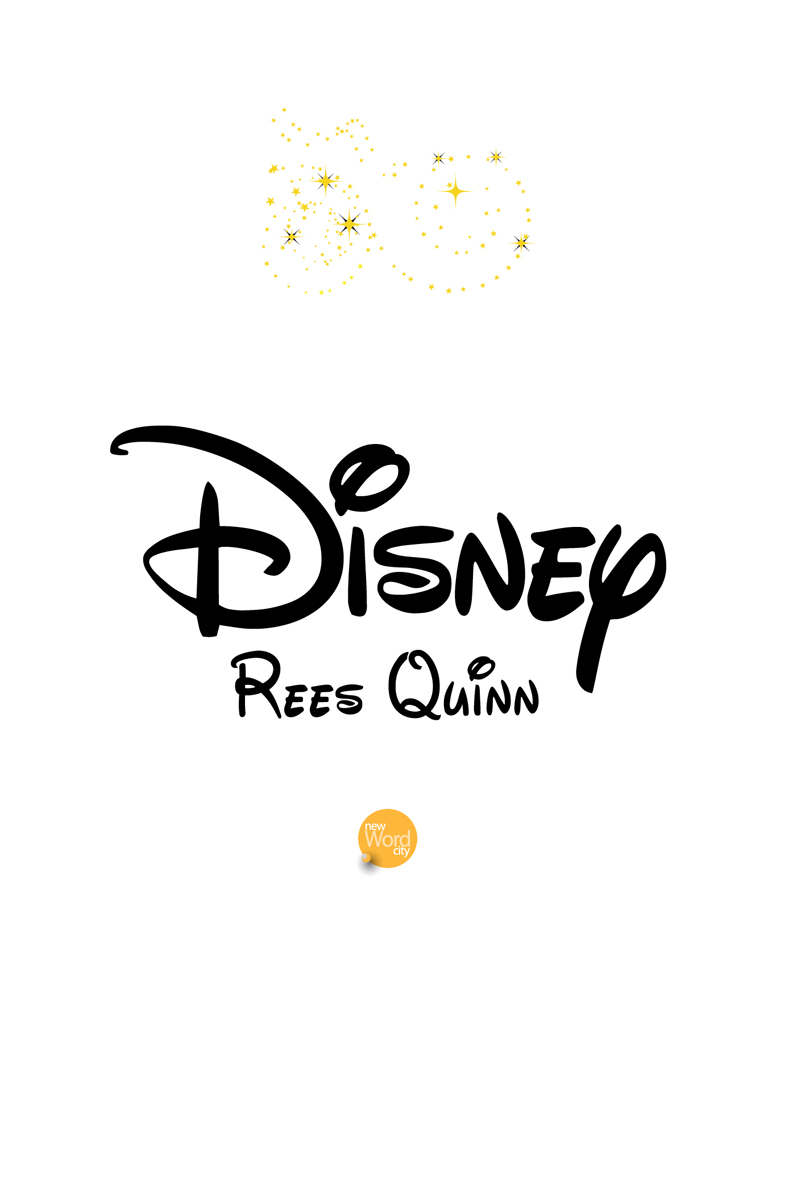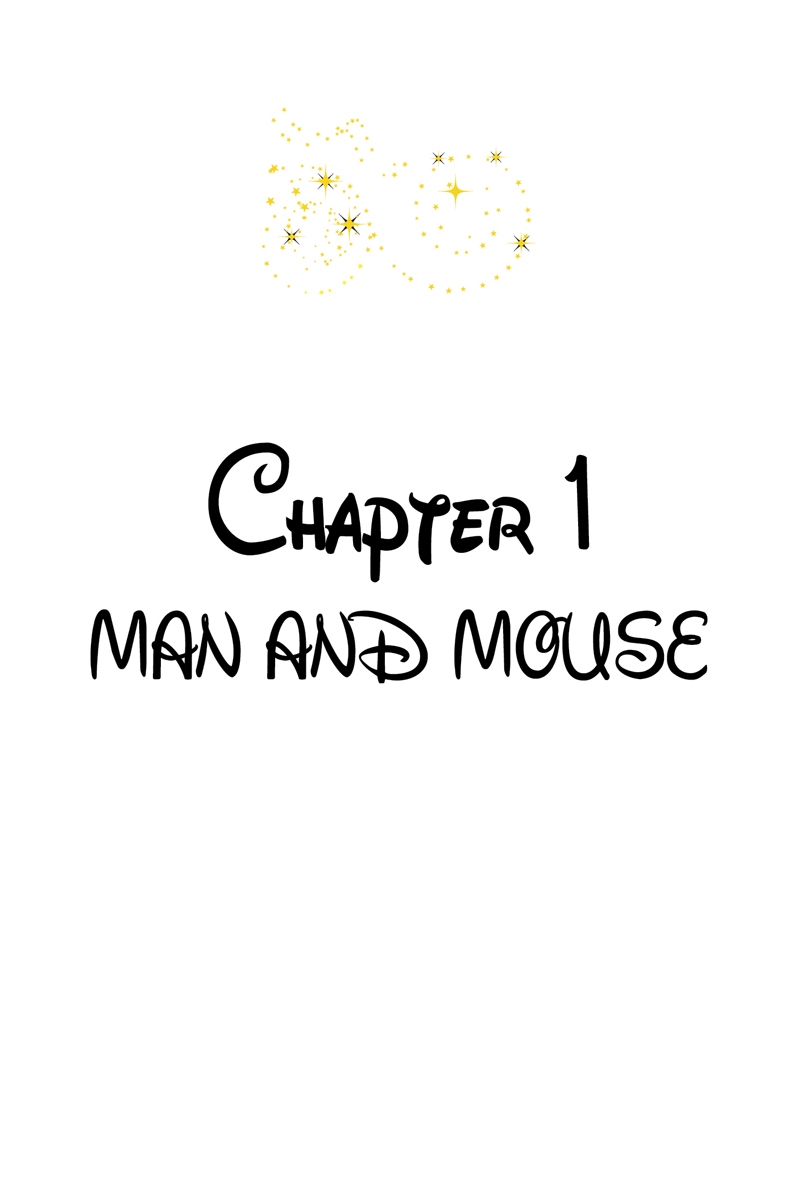Disney



History remembers the dreams that become reality. The dreams of
Walt Disney
– like those of inventor
Thomas Edison
or industrialist
Henry Ford
– were uniquely American.
Disney’s dreams began in a barn on his family’s Missouri farm, where young Walt used roofing tar to paint a landscape of deer and rabbits and other woodland creatures. As a schoolboy, inattentive and bored with his lessons, he sketched animals in the margins of his textbooks. He liked to draw, but he understood his limitations as an artist. As an adult, he surrounded himself with talented artists and collaborators, although their relationships were complicated and often contentious.
The people on his staff remember him mostly as stern and strict. The Walt Disney who made his mark on the entertainment industry was fierce and unflappable, an entrepreneurial force unwilling to settle for anything less than his inventive mind could imagine. A friend described him as “a sort of visionary handyman, who has built a whole industry out of daydreams. He has that rarest of qualities, the courage of his doodles.”
Disney occasionally played polo with the actor
Spencer Tracy
, but he never fit into Hollywood life. He was a child at heart. He breathed new life into fairy tales like
Alice in Wonderland
,
Snow White
, and
The Three Little Pigs
. With Disneyland, he built a fantasy world of brick and mortar. On television, he charmed and inspired, but for all the millions who flocked to his films and parks, Disney died alone.
Today, The Walt Disney Company is a vast entertainment and media conglomerate. It includes studios, cruise lines, resorts, children’s books, magazines, the ABC network, and ventures in cable television and the Internet. At the Walt Disney Family Museum, thousands of artifacts from Disney’s life and career are on display, including the 248 awards he received. He was happy to have them - and happier still in the work that rewarded him and his audience so handsomely.
As Walt Disney was fond of saying, “It’s kind of fun to do the impossible.”

Walter Elias Disney
was born on December 5, 1901, in a modest house his father built in northwest Chicago. He had three older brothers - Herbert, Ray, and
Roy
. His sister, Ruth, was born two years later. Walt’s parents, Elias and Flora, were devout members of the Saint Paul’s Congregational Church, where Elias served as a deacon, and named Walter after the minister who baptized him. Elias played the violin at services and sometimes delivered sermons when the minister was absent.
Walt’s father was a stern man, taught the value of hard work on his family’s farm. Born to Irish immigrants, Elias grew up in Ellis, Kansas, where he worked wheat fields and tended cattle with his ten siblings, but Elias was restless and eager to make his mark in the world. He worked in railway shops in Ellis to earn extra money, and when he had enough, he set out for Florida to become a citrus farmer. There he met and married Flora Call, a schoolteacher vacationing from Ohio. After a devastating frost, Elias and his young family – which by now included Herbert and Ray – had to abandon the citrus orchard. This first of many failures brought the Disneys to Chicago, where in 1893, he worked as a carpenter on The World’s Fair, also known as the
Colombian Exposition
. Though he was not yet born, Walt Disney is said to have later been inspired by his father’s part in this project.
By the time Walt came along, Elias was running his own modest construction company. It was a family business. Walt remembered, “My mother used to go out on a construction job and hammer and saw planks with the men.” Still, Elias barely turned a profit. After little more than a decade, he was ready to try farming again. Something happened about this time in the Disney’s Chicago neighborhood that made Elias even more determined to move. Some neighborhood boys the same age as Herbert and Ray were involved in a shootout with police. Believing boys were “best removed from the corruptive influences of a big city and subjected to the wholesome atmosphere of the country,” Elias closed the business, sold their home, and moved the family to the small town of Marceline in north-central Missouri, where his brother, Bob, owned a 500-acre farm. Marceline, with a population of about 4,500 had been built around the Atchison, Topeka and Santa Fe Railroad, which connected Chicago to Kansas City, about 125 miles to the southwest.
The Disneys’ property was a modest forty acres, and the farmhouse was cramped and rickety, but Walt remembered it as a lovely white house with an expansive lawn. The farm had orchards and livestock, as well as some row crops. “We had every kind of apple you ever heard of,” Walt later recalled of his boyish fascination with the farm, “including one called a Wolf River apple. Wolf River apples were tremendous in size. People came from miles to see ours.” The Disney boys hopped onto the backs of pigs to herd them into pens or to the mud that ringed the farm’s pond and often ended up in the mud themselves. They sometimes crowded onto a friendly old horse named Charley, who galloped through the orchard as his young passengers ducked or jumped off to avoid low-hanging branches. Walt’s dog – a Maltese terrier – trailed him everywhere he went. The farm “was just heaven for city kids,” Roy remembered.
But Elias was a poor farmer. Rather than learning from his mistakes, he always seemed to make new ones. The family struggled.
Walt was oblivious to those problems. He lived a charmed, Tom Sawyer-like life in what he would later recall as the epitome of small-town America. Marceline’s unpaved main street, Kansas Avenue, included a dry-goods store, a meat market, a creamery, and a three-story “racket” store, which brought in goods from New York, from dresses to furniture. The town’s judge ran Hott’s Tavern, which rented rooms. There was also a hardware store, a farm equipment dealer, jeweler, hotel, and the J.E. Ellis Big Department Store. At Ripley Square, bands performed in a gazebo nestled in a wooded park, with a pond and a cannon mounted on a concrete base. This small-town scene became etched in Walt Disney’s heart and mind. He later said, “More things of importance happened to me in Marceline than have happened since – or are likely to in the future.”
Walt’s parents decided not to enroll him in school until he was seven. He didn’t mind; he had little interest in education, although he later complained about entering school in the same grade as his younger sister Ruth.
Show business impressed young Walt. He was so taken with a traveling production of
Peter Pan
that he later auditioned for and won the part of the title character in a school play. His brother Roy rigged a harness so that Walt could soar above the audience. The apparatus broke, and Walt plunged into the seats. When
Buffalo Bill
’s Wild West Show came to Marceline, Buffalo Bill spotted young Walt walking down the street and gave the boy a ride in his wagon.
Walt liked to draw and constantly doodled in the margins of his school papers. He taught himself the trick of drawing figures in graduated poses on successive sheets of paper to achieve a basic animation. Flipping through the pages of his textbooks, his doodles appeared to move.
One day, he discovered next to the barn a brush and a barrel of tar used to patch the roof and fix drains and proceeded to cover the canvas walls with tar-paintings of animals. Unlike Tom Sawyer, he was punished for his mischief, but afterwards, an aunt gave him a box of pencils and drawing paper. Such gifts were treasured by Walt and his siblings, who even for Christmas, could expect only clothes. The few toys Walt had were given to him by his older brother, Roy, who bought them with money earned working odd jobs. Roy sometimes shared his income with Walt, whether the boy earned it or not. Hired to wash the town hearse, for example, Roy paid Walt to do little more than play dead inside the vehicle.
When Walt was seven, a family friend, a physician, paid him a dollar to do a portrait of his horse. Later, Walt acknowledged, “The result was pretty terrible.” But when the doctor and his wife heaped praise on the boy, the elated Walt decided he wanted to become an artist. His father enrolled him in a class at the Chicago Art Institute.
In 1907, Walt’s older brothers, Herbert and Ray, left home after an argument with their father and returned to Chicago. Without their help, Elias had could not manage the farm, and within three years, it failed. Elias sold his livestock and his land and looked to start again in Kansas.
In 1911, the Disneys moved to Kansas City to a house that had no indoor plumbing. Elias got a job delivering the
Kansas City Star
. He paid a few boys $3 a week to help him with the 3,000 subscribers on his route, but made his sons work for nothing. Walt and Roy got up at 3:30 every morning to help their father deliver newspapers, no matter the weather. It was tiring work, especially in the winter, when the boys had to trudge through knee-deep snow, but it forged a lifelong bond between Walt and Roy.
When Walt was nine and eager to earn his own money, he convinced his father to order fifty extra papers, which Walt sold to commuters after his father’s route was complete. But Elias refused to pay him. Frustrated, Walt placed his own order for more papers and sold them without his father’s knowledge and secretly took a job in a candy store.
But he was not ready to abandon childhood. “On nice mornings,” he remembered, “I used to come to houses with those big old porches and the kids would have left some of their toys out. I would find them and play with them there on the porch at four in the morning when it was just barely getting light. Then I’d have to tear back to the route again.”
Walt was fourteen when he started taking drawing and sculpture lessons at the Kansas City Art Institute on Saturday mornings. Elias Disney believed the art classes were educational and was determined to see his sons improve themselves whether, in Walt’s words, “they liked it or not.” In this case, Walt liked it a lot. For a while, he thought he might become a newspaper cartoonist and spent time in the art department of the
Kansas City Star
.
When he wasn’t drawing or delivering newspapers, he sometimes visited
Electric Park
with his sister Ruth, just fifteen blocks from the Disney’s home. Built in 1899 by beer magnate Joseph Heim and his brothers, Electric Park was one of the first amusement parks in the United States. It was modeled after Chicago’s
White City
, an amusement park that took its name from the Columbian Exposition, where Elias Disney had worked.
Walt and Ruth attended band concerts and vaudeville shows at Electric Park, swam in the indoor pool and strolled through the German village and the Temple of Mirth. They rode on a small railway, as well as a roller coaster, the Double Whirl, the Circle Swing, and the Flying Lady. They visited a soda fountain, ice cream shops, a theater, and a fortune teller. At the end of the day, they marveled as Electric Park set off a spectacular fireworks display.
At home, Elias began to withdraw from life. He had always been strict with his sons, but in Kansas City, his temper worsened. Beatings over even the smallest mistake or misbehavior grew increasingly frequent. Now, Elias used a leather strap.
Walt finally put an end to the violence. Eighteen-year-old Roy, determined to run away as his older brothers had, told Walt, then fourteen, that he didn’t have to tolerate their father’s abuse any longer. The next time Elias raised the leather strap to beat his youngest son, Walt turned and grabbed his father by the arms. As they stared at each other, father and son realized who was now the stronger of the two. Elias broke down sobbing. He never hit his sons again.
Walt and Ruth attended Benton Grammar School through the seventh grade, where Walt earned a reputation for falling asleep in class and drawing incessantly. When he graduated, many of his teachers were relieved. He said later that seventh grade was “one of the toughest trials” in his limited academic career.
In fifth grade at Benton Grammar, Walt met Walter Pfeiffer, whose family lived two doors down from the Disneys. The Pfeiffers were energetic and entertaining and introduced Walt to motion pictures. He was fascinated by movies and intrigued by how enthralled the audiences were. He also liked movie theaters: Besides showing films, they hosted amateur nights for local performers. At the Pfeiffer home, Walt often joined the family in impromptu performances. Their daughter, Kitty, played the piano, and Walt and Walter Pfeiffer acted out comedy sketches. They soon took their act, which they called “The Two Walts,” to school, and entered talent contests at Marceline’s Agnes Theater.
When he dressed as Abraham Lincoln for a school report in which he recited the
Gettysburg Address
, Walt’s teacher was so impressed that she called in the principal and paraded him around to the other classrooms. Walt also staged a one-man show impersonating silent-screen star
Charlie Chaplin
. A later character who spoke in a heavy Dutch accent was as not popular, and this act ended, at least for a time, Disney’s career in front of audiences.
In 1917, Disney saw a film that changed his life. Based on an 1812
Brothers Grimm
fairy tale,
Snow White
told the story of an orphan lost in the woods who is raised by a troop of dwarfs. Based on the Broadway play
Snow
White and the Seven Dwarfs
, the film starred a dark-haired actress named
Marguerite Clark
. Disney was beguiled by the film and especially by the way the movie was projected onto a four-sided screen by four separate projectors. Walt found a seat where he could see two screens at once, and because the projectors were not in synch, he watched each scene of the movie appear and then replay moments later on the adjoining screen. The effect was unforgettable.
That same year, Elias Disney, convinced the paper route had run its course, invested in the O-Zell Company in Chicago. O-Zell canned jellies and produced apple juice. Elias became part-owner and was in charge of construction and maintenance.
Walt was still in school when the Disneys moved back to Chicago, so Elias allowed him to remain in Kansas City to finish the eighth grade and to help the new owner of the paper route get started. After school was out, Walt got a job selling candy on the Santa Fe railroad route between Kansas City and Chicago. He enjoyed his time on the train and sometimes bribed the engineer into letting him ride in the coal car and smoke cigarettes bought with money from his candy sales. At the end of the summer, he rejoined his family in Chicago.
That autumn, Disney enrolled in McKinley High School in Chicago, where he was an illustrator and photographer for the school newspaper. At sixteen, he worked part-time for his father at the jelly factory, mashing apples to make pectin and washing and capping bottles. In the summer and during the busy holiday seasons, he worked at the post office, sorting and delivering mail. In September 1918, as he was walked through the
Chicago Federal Building
after completing a mail route, a bomb exploded. Walt was unhurt, but the blast shattered the windows of buildings across the street and killed two patrons and two mail clerks, one whose desk was two yards away from Walt’s. The bombing was blamed on a group of radicals called the
Industrial Workers of the World
.